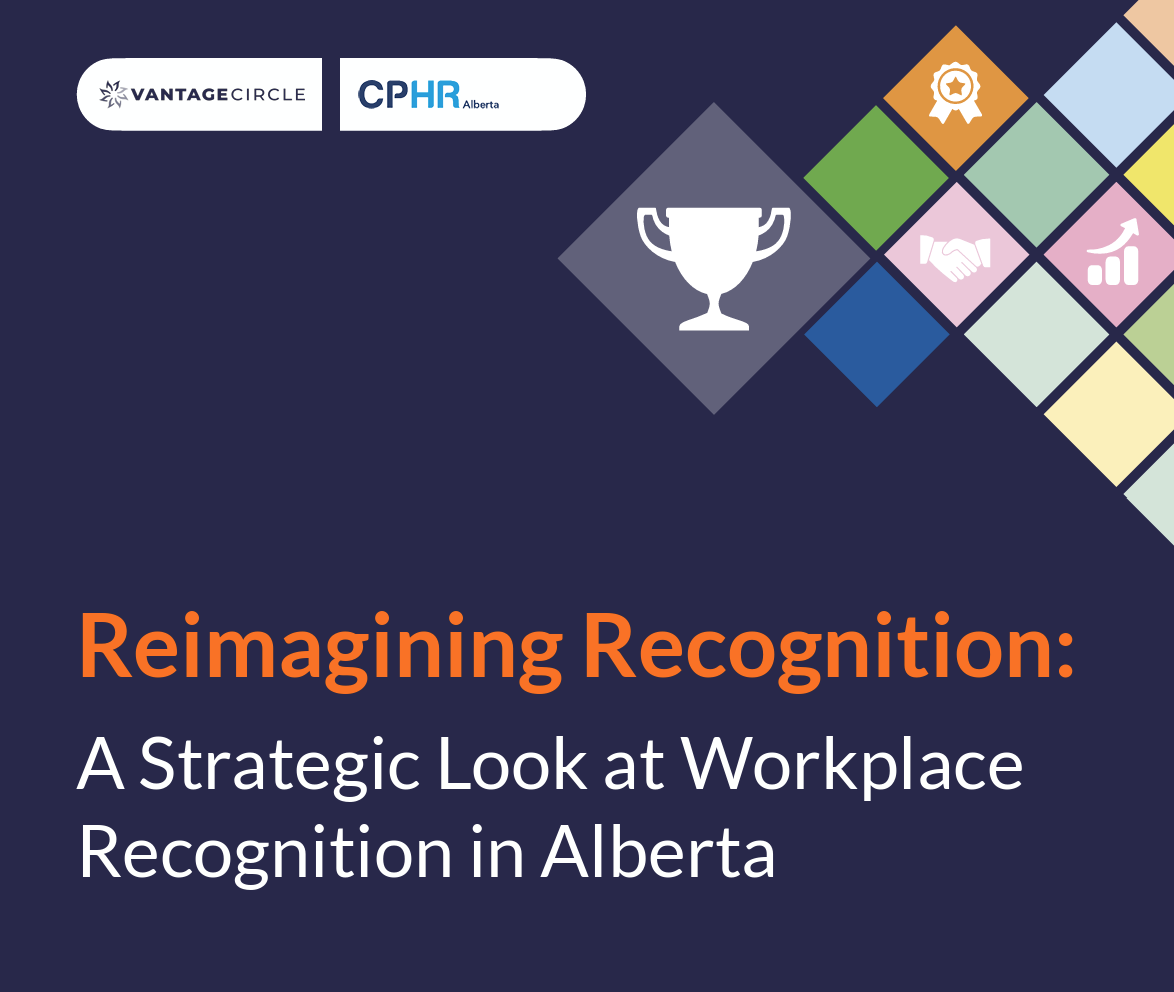
Novel Recognition Study Aims to Help Attract and Retain Global Talent in Canada
CPHR Alberta and the Vantage Circle team uncover impactful insights in a first-of-its-kind study to help shape the future of workplace recognition in Alberta and across Canada.
Alberta, Canada, June 2025 – Vantage Circle, the world’s leading Behavioural-Science-Powered Global Employee Engagement SaaS-Platform, in partnership with CPHR Alberta, is pleased to announce the release of a groundbreaking new report: “Reimagining Recognition: A Strategic Look at Workplace Recognition in Alberta.”
As Alberta and Canada work to attract and retain global talent in a fiercely competitive labour market, the report offers strategic, research-backed guidance and insights better position themselves. This first-of-its-kind study combines insights from led sessions from senior HR leaders across Alberta and responses submitted to Vantage Circle’s proprietary AIRe™ assessment.
The findings demonstrate how modern recognition practices can reinforce behaviours aligned with organizational success, and how HR professionals can be powerful catalysts for lasting culture change. CPHR Alberta’s forward-thinking approach equips members and their organizations with the insights and tools needed to create impactful, people-first recognition strategies.
Ioana Giurca, CEO of CPHR Alberta, noted:
“Alberta’s ability to compete in the global economy depends on attracting and retaining top talent. With this study now completed, HR and business leaders across the province have access to key insights to support their continued work in building thriving workplaces.
The findings highlight that there is still more to be done in Alberta to ensure meaningful recognition programs are in place—programs that not only strengthen retention but also support both the bottom line and the people who drive business success. These insights are already shaping workforce strategies and driving meaningful change in Alberta’s business community.”
Partha Neog, CEO and Co-founder of Vantage Circle, said:
“Recognition plays a pivotal role in shaping organizational culture and employee engagement. This report offers valuable insights into how Canadian organizations are approaching rewards and recognition in a rapidly evolving work environment. We hope these findings will serve as a practical guide for HR leaders looking to create more meaningful and impactful recognition programs.”
Key findings include:
- 40% of organizations actively promote recognition tied to behaviours that support diversity, equity & inclusion (DE&I), sustainability, and other organizational values.
- Over 80% continue to rely on service awards as the primary component of their recognition and rewards (R&R) programs.
- While 50% of organizations report that their recognition is based on both outcomes and behaviours, two-thirds of those admit they lack a structured process to consistently identify or differentiate employees who demonstrate those behaviours.
The report also reinforces the strategic importance of certified HR professionals. Organizations that employ Chartered Professionals in Human Resources (CPHR) are better positioned to design and sustain impactful programs that retain top talent and support long-term business goals.
Having a Chartered Professional in Human Resources (CPHR) within organizations is critical to achieving business objectives and safeguarding an organization’s greatest asset—its people. This is why Vantage Circle is entrusting a CPHR to support the growth of our Alberta office, hiring and retaining the workforce's top talent.
This report aims to equip HR professionals with actionable insights to enhance their recognition strategies and align them with employee expectations in today’s hybrid work environment.
Download the full report: Reimagining Recognition: A Strategic Look at Workplace Recognition in Alberta
About Vantage Circle
Vantage Circle is a leading global employee recognition and rewards platform powered by behavioral science. Trusted by over 3.2 million users and 700+ organizations worldwide, the platform helps build high-performance cultures by aligning recognition with company values and business goals. Vantage Circle enables HR leaders and managers to identify, recognize, and reinforce meaningful behaviors through targeted recognition, personalized rewards and incentives, and a holistic approach to employee wellness. With over 14 years of experience, the platform supports global enterprises such as Wipro, Infosys, Blue Star, Bosch, Tata Communications, Tata Motors, Tata Realty, Cognizant, Wells Fargo, and ACG in transforming how they engage and motivate their workforce. The platform is available in 16+ languages with localized rewards in over 100 countries, making recognition more relevant and inclusive. It also integrates seamlessly with collaboration tools like Microsoft Teams and Slack, enabling recognition to happen in the flow of work.
Learn more at vantagecircle.com.
The views and opinions expressed in this blog post belong solely to the original author(s) and do not necessarily represent the views and opinions of CPHR Alberta.





